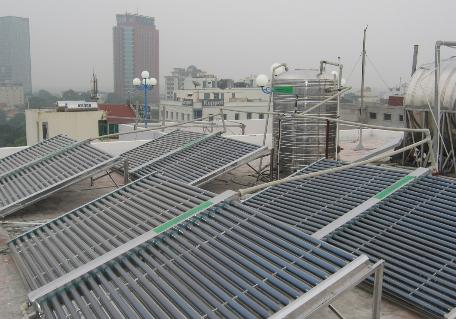Difficult to reduce energy intensity while saving is just seen as a bandwagon.
Currently, Vietnam has developed policies to encourage, support and implement programs and projects to save energy. Although the activities are energetic, the dispersion and effectiveness of the program are rather limited. The National Target Program on energy savings and efficiency has worked out quite specific targets for each sector. In the overall period 2006-2010 it decreases 3-5% of total energy consumption. In the second phase 2011-2015, the decrease is 5-8%, with total amount saved from various sources of about 930 billion.
The program achieved various encouraging results; raising public awareness, preparing the legal documents, implementing energy efficiency projects in the sectors and locality, the energy consumption in a number of industries is evaluated to make progress, such as in ceramics and construction materials. However, according to the Ministry of Industry and Trade in the reviewed period 2010-2013, due to limited resources, and scattered investment, the efficiency is not high, not attractive enough to involve the businesses to participate, many projects are fragmented and have not properly reached national targets. Meanwhile, many units still wait for and rely on the state support, lacking stern instructions and directions, especially lacking the role of science and technology.

To reduce the energy intensity is still really hard
On the other hand, we should take it for granted that energy saving is very important as a strategic mission, a national policy, but only with saving measures, we still cannot reduce the energy intensity as much as other countries do. Because the structural development of the national economy is irrational, resulting in high energy intensity and electricity intensity out of GDP. For developing countries, the energy intensity and electricity intensity are higher than that of the developed countries, which is realistic, but it cannot be higher than 2-3 times. This figure shows that our country's energy efficiency is not yet efficient, leading to high production costs, low competitiveness.
Currently, Vietnam industry consumes 52.5% power, 38.6% of the total commercial energy, but only makes up 32.5% of GDP. Production of cement, construction materials, and steel is rated as consuming much energy. Meanwhile, agriculture - forestry - fisheries sector is only 1.4% of the total consumption of electricity, 1.28% of the total commercial energy, while bringing about 20% of GDP.
Four strategic solutions
To reduce the intensity of energy consumption, scientists confirm that the first goal is to have the benchmarking for energy consumption. This is one important tool in the operation and management of energy efficiency, but for a long time we have let it loose. Some opinions suggest, in the market economy it is not necessary to manage the energy benchmarking, leading to the dismiss of Norms benchmarking Institute at the previous State Planning Commission. Meanwhile, most countries in the world are doing research and use the energy benchmarking. Using energy with the advanced benchmarking not only means energy savings and efficiency, contributes to reduction of energy intensity, but also shows equality of all citizens in using energy resources.
Along with it, it is necessary to prepare the Master Plan of National Energy, with objectives for next few decades in the followings: reduction of energy intensity, ensuring the sufficient energy for economic development. For immediate period, preparation must be immediately done to provide a basis for adjustments and research to prepare the master plans for sub-sector such as coal, oil - gas, and natural energy.
At the same time, it is to identify and study into appropriate structure of the national economies, to ensure sustainable development of high added value that reduces energy intensity. Research into advanced energy benchmarking for various types of technology in current and future use should also be carried out.
Do Trong Tan
